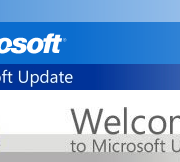Microsoft to revamp its documentation for security patches
Microsoft has eliminated individual patches from every Windows version, and Security Bulletins will go away soon, replaced by a spreadsheet with tools
With the old method of patching now completely gone—October’s releases eliminated individual patches from every Windows version—Microsoft has announced that the documentation to accompany those patches is in for a significant change. Most notable, Security Bulletins will disappear, replaced by a lengthy list of patches and tools for slicing and dicing those lists.
Security Bulletins go back to June 1998, when Microsoft first released MS98-001. That and all subsequent bulletins referred to specific patches described in Knowledge Base articles. The KB articles, in turn, have detailed descriptions of the patches and lists of files changed by each patch. The Security Bulletins serve as an overview of all the KB patches associated with a specific security problem. Some Security Bulletins list dozens of KB patches, each for a specific version of Windows.
Starting in January, we’ll have two lists—or, more accurately, two ways of viewing a master table.
Keep in mind that we’re only talking about security patches and the security part of the Windows 10 cumulative updates. Nonsecurity patches and Win7/8.1 monthly rollups are outside of this discussion.
To see where this is going and to understand why it’s vastly superior to the Security Bulletin approach, look at the lists for November 8, this month’s Patch Tuesday. The main Windows Update list
shows page after page of security bulletins, identified by MS16-xxx numbers, and those numbers have become ambiguous. See, for example, MS16-142 on that list, which covers both the Security-only update for Win7, KB 3197867, and the Monthly rollup for Win7, KB 3197868. The MS16-142 Security Bulletin itself runs on for many pages.
Now flip over to the Security Updates Guide. In the filter box type windows 7 and press Enter. You see four security patches (screenshot below): IE11 and Windows, both 32- and 64-bit. They’re all associated with KB 3197867.
In the Software Update Summary, searching for “windows 7” yields only one entry, for the applicable KB number (screenshot below).
Here’s why the tools are important. On this month’s Patch Tuesday, we received 14 Security Bulletins. Those Security Bulletins actually contain 55 different patches for different KB numbers; the Security Bulletin artifice groups those patches together in various ways. The 55 different security patches actually contain 175 separate fixes, when you break them out by the intended platform.
There’s a whole lotta patchin’ goin’ on.
Starting this month, you can look at the patches either individually (in the Security Updates Guide) or by platform (in the Software Update Summary), or you can plow through those Security Bulletins and try to find the patches that concern you. Starting in January, per the Microsoft Security Response Center, the Security Bulletins are going away.
Of course, the devil’s in the implementation details, but all in all this seems to me like a reasonable response to what has become an untenable situation.
This is a repost from http://www.infoworld.com/


